NEMA ENCLOSURE DEFINITIONS
NON-HAZARDOUS LOCATIONS
Type 1—Enclosures are intended for indoor use. Primarily used to
provide a degree of protection against limited amounts of falling
dirt.
Type 4—Enclosures are intended for indoor and outdoor use.
Primarily used to provide a degree of protection against windblown
dust and rain, splashing water,
Hose-directed water and damage from external ice formation.
Type 3R—Enclosures are intended for outdoor use, primarily to
provide a degree of
Protection against falling rain and to be undamaged by the formation
of ice on the enclosure.
Type 12—Enclosures are intended for indoor use. Primarily
used to provide a degree of protection against circulating dust,
falling dirt, and dripping non-corrosive liquids.
HAZARDOUS (CLASSIFIED) LOCATIONS—See NEC Explosive Atmosphere
Classifications Below
Type 7—Enclosures intended for indoor use in locations
classified as Class I, Groups A, B, C, or D as defined by National
Electric Code.
Type 9—Enclosures intended for indoor use in locations
classified as Class II, Groups E, F, or G as defined by the National
Electric Code.
NATIONAL ELECTRICAL CODE EXPLOSIVE
ATMOSPHERE CLASSIFICATIONS
Certain locations are hazardous
because the atmosphere does or may contain gas, vapor or dust in
explosive quantities.
The National Electrical Code (NEC)
divides these locations into Classes and Groups according to the
type of explosive agent which may be present. Listed are some of the
agents in each classification. For complete list, see NFPA (National
Fire Protection Association) publication 497M.
Underwriters’ Laboratories tests
motors and other devices for safety in explosive atmospheres, and
publishes a list of those meeting its standards for each Class and
Group. Use of UL Listed devices does not necessarily make an
installation conform to the NEC or local codes. Consult Chapter 5 of
the NEC, local building codes, OSHA requirements and insurance
inspectors for detailed data as to proper procedures.
CLASS I
Group A: Acetylene.
Group B: Butadiene, ethylene oxide, hydrogen, propylene
oxide, manufactured gases containing more than 30% hydrogen by
volume.
Group C: Acetaldehyde, cyclopropane, diethyl ether, ethylene.
Group D: Acetone, acrylonitrile, ammonia, benzene, butane,
ethanol, ethylene dichloride, gasoline, hexane, isoprene, methane
(natural gas), methanol, naphtha, propane, propylene, styrene,
toluene, vinyl acetate, vinyl chloride, xylene.
CLASS II
Group E: Aluminum, magnesium and other metal dusts with
similar characteristics.
Group F: Carbon black, coke or coal dust.
Group G: Flour, starch or grain dust.
CLASS III
Easily ignitable fibers, such as rayon, cotton, sisal, hemp, cocoa
fiber, oakum, excelsior and other materials of similar nature.
OkSolar.com Affiliate
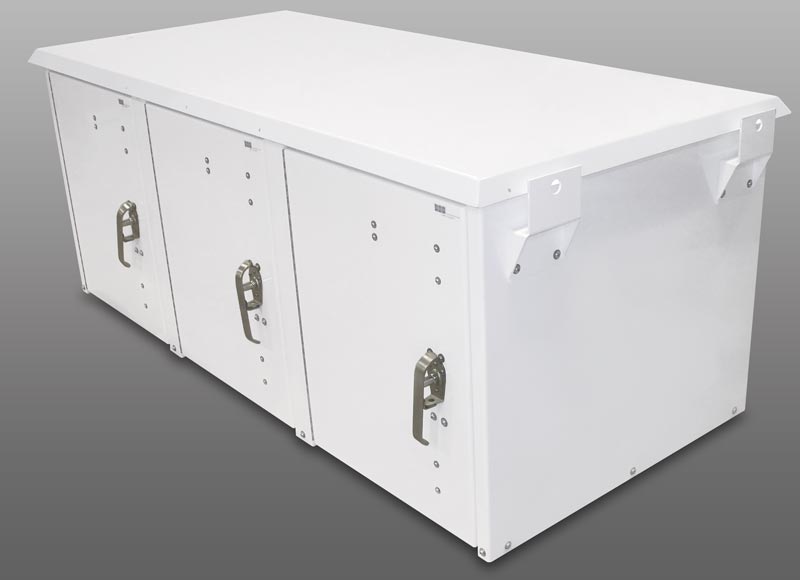
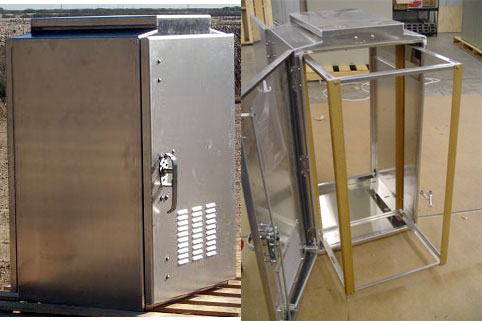
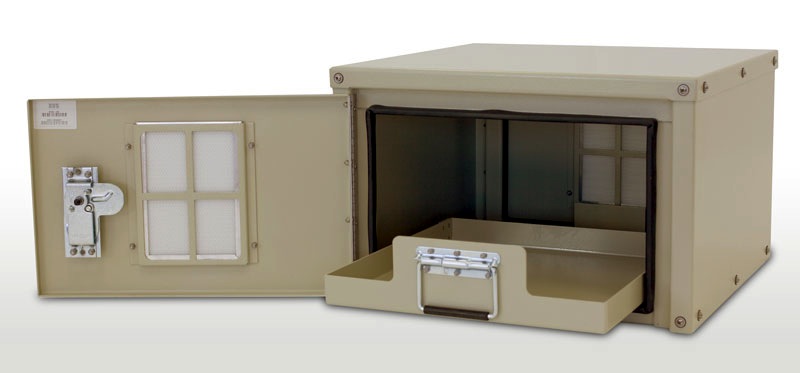
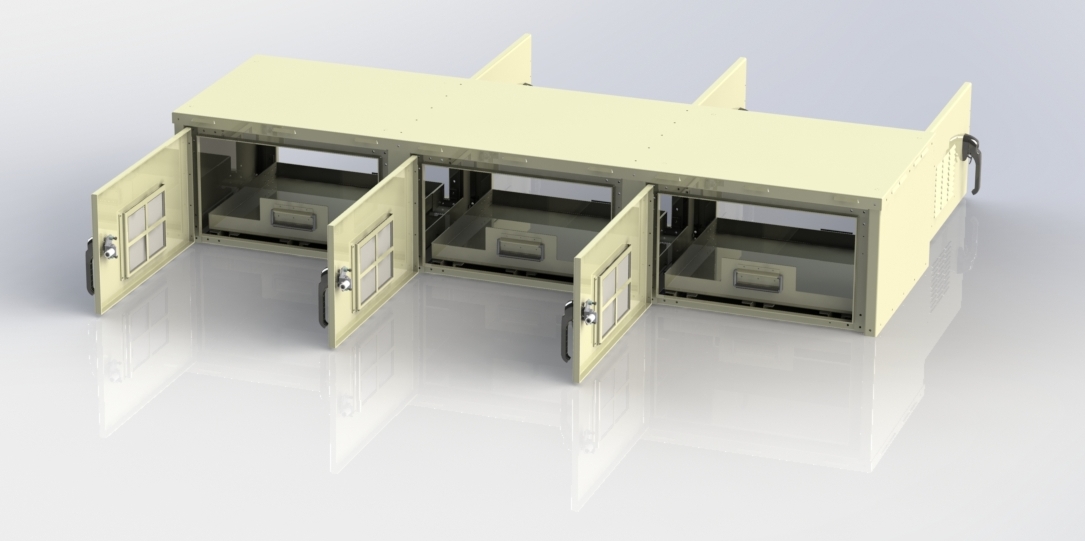
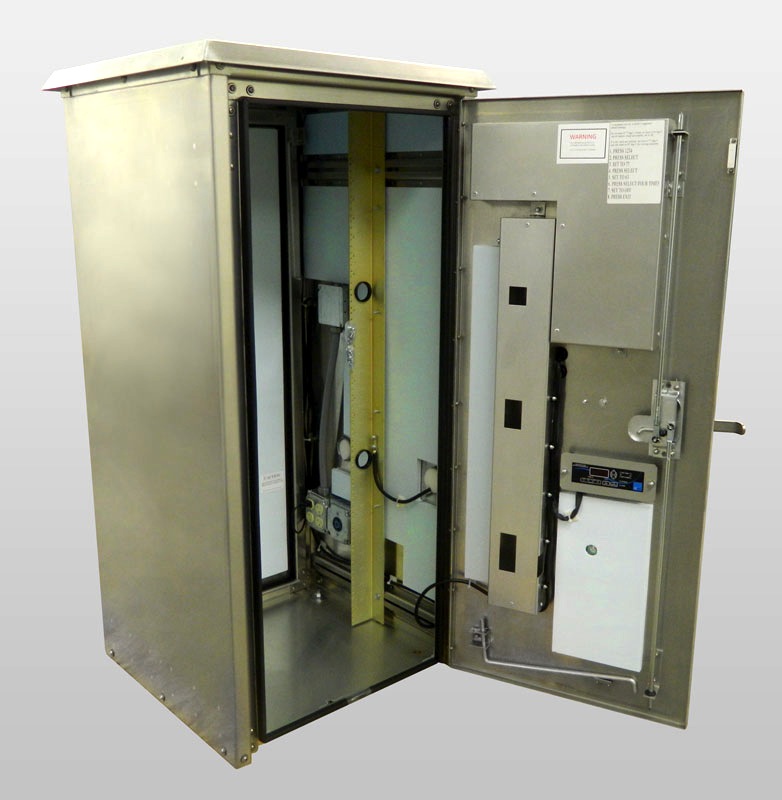
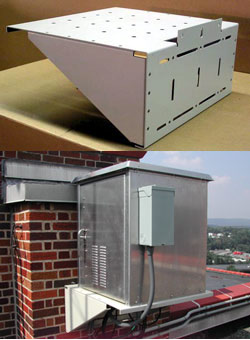
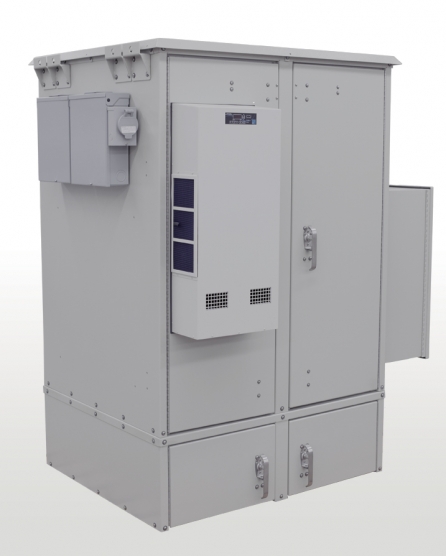
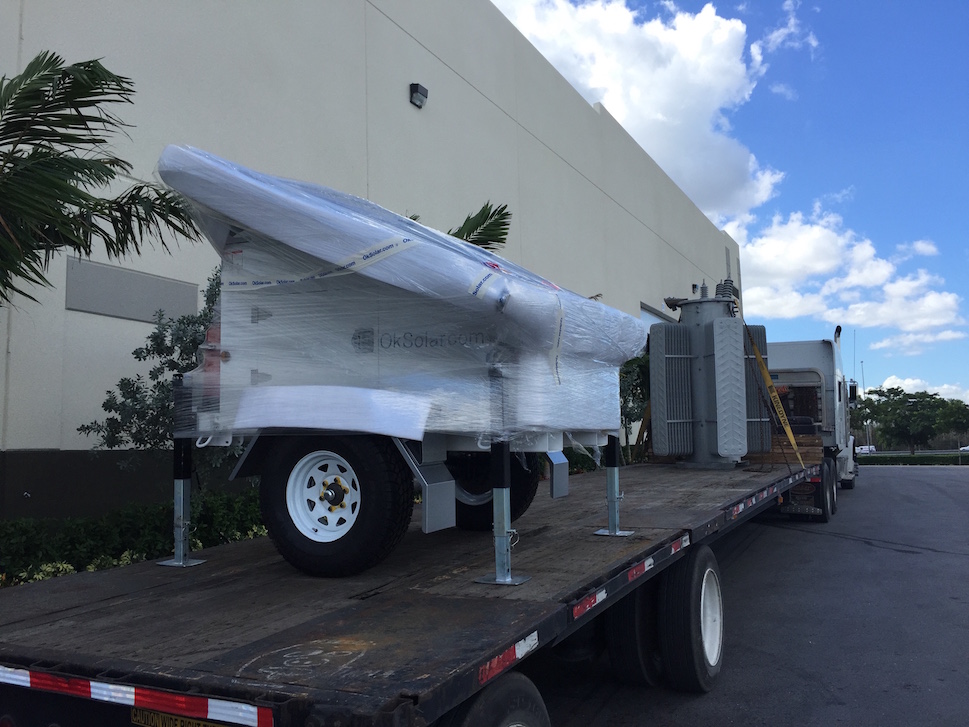
Battery
Enclosures
 Hoffman
Battery Boxes (Steel & Fiberglass) Hoffman
Battery Boxes (Steel & Fiberglass)
Molded fiberglass polyester with continuous gasket and
stainless screw closures. Steel cabinets have continous seams and
are weatherproof with nearly flush door latch

HOFFMAN FIBERGLASS BATTERY ENCLOSURE
 Aeromax
Container made of epoxy, e-glass with 1 1/2" dense urothane
structural foam insulated core composite wall construction.
Painted with epoxy paint and gel coated. Lid mounted hydrogen
venting system. Unique battery enclosure design is non-corrosive,
non-conductive, acid and mildew resistant. Aeromax
Container made of epoxy, e-glass with 1 1/2" dense urothane
structural foam insulated core composite wall construction.
Painted with epoxy paint and gel coated. Lid mounted hydrogen
venting system. Unique battery enclosure design is non-corrosive,
non-conductive, acid and mildew resistant.

1, Nema Enclosure Definitions, enclosures and boxes
for, solar energy, Aeromax, Container, Steel cabinets,
aeromax, container, steel cabinets .7
  |
![]()